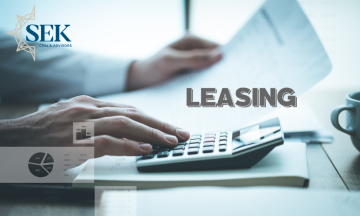Recent News & Blog / Implementation of GASB 87, Leases, has arrived

November 1, 2022
By: Taylor M. Rote, CPA
Audit Manager
The time has finally arrived. Implementation of the Governmental Accounting Standards Board (GASB) Statement 87, Leases, became effective for fiscal years beginning after June 15, 2021, after an 18-month delay from the initial implementation date. For governments with fiscal years ending June 30, 2022, the standard has been implemented and the focus has shifted to subsequent reporting. The implementation process should be well underway for governments with fiscal years ending December 31, 2022. This article will outline considerations for both before and after the implementation of GASB 87.
As a quick refresher, GASB 87 shifts the reporting of leases into a more singular model for both lessees and lessors, with the basic consideration that leases are representations of financings. More specifically, they are representations of financings of an intangible asset (the right-to-use the underlying asset associated with a contract or lease). Another important aspect of this standard is that the lease conveys control to the lessee of that asset.
In accounting for GASB 87, a lease liability discounted to present value is recognized along with a corresponding right-to-use asset that is amortized over the shorter of the term of the lease or the life of the asset. The right-to-use asset should equal the initial measurement of the lease liability, plus any payments at or before the commencement of the lease term and certain other direct costs. From the lessor’s perspective, a lease receivable is recorded with an offsetting deferred inflow that will be recognized as revenue over the lease term.
Implementation of this standard can be a complex and time-intensive process. Some of the key considerations for the implementation of GASB 87 are outlined below:
- A full inventory of leases should be identified for further evaluation. Compiling all existing capital leases, construction agreements, and other contracts is a good starting point. Just because a contract doesn’t contain the word lease does not mean it doesn’t fall under the definition outlined in the standard. In many instances, embedded leases may be found in service contracts or construction agreements if they contain the right to use an asset, such as equipment. Searching the general ledger detail for recurring payments or payments to the same vendor could also identify leases.
- In the year of implementation, the lease liability and right-to-use asset are measured using the facts and circumstances of the earliest period presented on the financial statements. This is especially important for existing leases before the earliest period.
- When evaluating the inventory of leases, close attention should be paid to the lease term, or non-cancellable period. Many leases contain extension options that would be included in the lease term if the government is “reasonably certain” to exercise. On the other hand, if both the lessee and lessor can terminate a lease, that period is not included in the lease term used for measurement. A common example of this is automatic renewal to month-to-month, with both parties having the option to terminate.
- Another potential pain point is determining the interest rate at which future lease payments should be discounted. In many instances, the lessor’s rate is not explicitly stated in the lease. If this is the case, the first step is to reach out to the lessor to see if this rate can be obtained. If not, the standard allows the lessee to use their own estimated incremental borrowing rate. This would be based on the interest rate the government would be charged if they were to borrow the amount of the lease payments due over the lease term. Maintaining appropriate documentation of the rate used is imperative to support the rationalization of the estimate.
The process is not over for governments that have already implemented the lease standard. Existing leases should be evaluated annually if there are changes in the lease terms. If material, this could result in a recalculation of the lease liability and right-to-use asset. Continued evaluation of any new leases will also need to occur, as the considerations above will apply to all leases moving forward. A process should be implemented to appropriately evaluate terms and ensure all contracts are reviewed to determine if they meet GASB 87’s definition of a lease.
The SEK governmental team can assist your organization with the implementation of the new Leases standard. Contact us today for assistance.